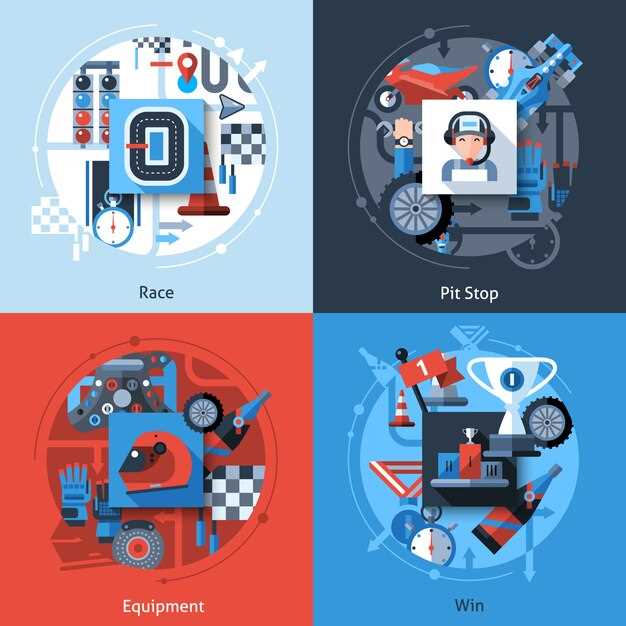
Building your first race car can be an exhilarating yet daunting challenge, especially when it comes to managing costs. One of the most critical aspects of any successful project is establishing a realistic budget that allows you to balance quality and affordability. By starting with a solid financial plan, you’ll be better equipped to make informed decisions throughout the building process.
Understanding where to allocate your funds is essential. From the chassis to the engine and everything in between, each component contributes to the overall cost of your race car project. Prioritize critical elements that affect performance and safety first, while also leaving room in your budget for unexpected expenses that may arise along the way.
In this article, we will share practical tips to help you manage your budget without sacrificing quality. Additionally, we will explore cost-saving techniques and resources, ensuring that you can successfully build your dream race car while staying within your financial means. Let’s dive into the essentials of budgeting for your first race car project!
Setting a Realistic Budget Based on Your Goals

Establishing a budget for your first race car project begins with understanding your specific goals. Whether you aim to build a competitive racer or a casual weekend vehicle, your financial plan should reflect these aspirations. Start by outlining the primary components you’ll need to purchase, including the chassis, engine, suspension, and safety equipment. Research the average costs associated with each part, keeping in mind that prices can vary widely based on quality and brand.
Once you have a clear list of necessary components, consider the costs for additional modifications, tools, and labor if applicable. It’s crucial to account for unexpected expenses, which often arise in automotive projects. A good rule of thumb is to add at least 15% to your initial budget estimate to cover these contingencies.
Additionally, prioritize your spending based on what is crucial for achieving your racing goals. If your aim is track performance, invest in high-quality suspension and brakes before aesthetic modifications. This method allows you to allocate resources more effectively, ensuring that you meet your objectives without overspending.
Finally, regularly review and adjust your budget as your project progresses. Keeping a close eye on expenses will help you stay on track and make informed decisions about where to save and where to splurge. By setting a realistic budget aligned with your goals, you’ll enhance your chances of successfully completing your race car project without financial strain.
Breaking Down Costs: Essential Parts and Their Prices
When embarking on your first race car project, creating a detailed plan is crucial for managing costs effectively. Understanding the essential parts required for your build is the first step towards budgeting. Below is a breakdown of key components along with their average prices to help you gauge your total investment.
1. Engine: The engine is the heart of your race car. Depending on your goals, prices can range from $2,000 to $10,000. Consider factors like engine type and horsepower when planning your budget.
2. Transmission: A quality transmission is vital for performance. Expect to spend between $1,200 and $4,000. Different racing disciplines may require specific types of transmissions, so plan accordingly.
3. Suspension System: A robust suspension setup ensures better handling. Costs typically range from $800 to $3,000. Evaluate whether you need coilovers, sway bars, or other specialized components.
4. Tires: Tires greatly affect grip and speed. A set can cost anywhere from $600 to $2,000 depending on the type and brand. Make sure to factor in the need for multiple sets throughout the racing season.
5. Brakes: Safety is paramount, and a reliable brake system is non-negotiable. Budget around $500 to $2,500 for brakes, including calipers, rotors, and pads.
6. Chassis Modifications: Customizing the chassis can be necessary for weight reduction and aerodynamics. These modifications can cost anywhere from $1,000 to $5,000 depending on how extensive the changes are.
7. Safety Gear: Investing in safety gear such as helmets, harnesses, and fire suits is essential and can range from $500 to $2,000. While these are not car parts, they are critical for your protection on the track.
Additionally, allocate funds for tools, labor, and unexpected expenses. By accurately estimating the costs of these essential parts and planning your budget accordingly, you’ll be better prepared to tackle your first race car project and enjoy the thrills of racing.
Finding Discounts and Deals for Racing Parts and Supplies

When embarking on your first race car project, it is crucial to build a solid financial plan. Finding discounts and deals on racing parts and supplies can significantly reduce your overall expenses while ensuring that you have access to high-quality components. Here are some effective strategies to help you locate those valuable savings.
1. Online Marketplaces: Websites such as eBay, Craigslist, and Facebook Marketplace often have listings for new and used racing parts at competitive prices. Regularly monitoring these platforms can lead to substantial discounts. Always negotiate prices when possible to maximize your savings.
2. Off-Season Shopping: Purchasing racing supplies during off-peak seasons can result in significant discounts. Many retailers offer clearance sales to make room for new inventory. Plan your purchases strategically to take advantage of these sales.
3. Sign Up for Newsletters: Many racing suppliers provide newsletters featuring exclusive deals and promotions. By subscribing, you can receive notifications about sales directly to your inbox. This can be an effective way to stay informed about discounts for parts you need for your build.
4. Join Racing Forums and Clubs: Engaging with fellow racing enthusiasts can provide insights into where to find the best deals. Members often share information about discount codes and special promotions from various suppliers. Additionally, these communities may have members looking to sell parts at lower prices.
5. Loyalty Programs: Many auto parts retailers offer loyalty programs that reward customers with points or discounts on future purchases. By participating in these programs, you can accumulate savings over time, which will help manage your budget effectively.
6. Compare Prices: Take the time to research and compare prices from various suppliers before making a purchase. Use price comparison websites or tools to ensure you are getting the best deal possible. This practice can save you a considerable amount on essential supplies for your project.
7. Attend Racing Events: While attending local races, keep an eye out for vendor booths selling racing parts. Vendors often offer special event pricing and promotions that can save you money. Plus, you may find unique parts that may not be available online.
By implementing these strategies, you can effectively find discounts and deals that align with your budget. Careful planning and diligent searching will make your first race car project not only enjoyable but also financially manageable.
